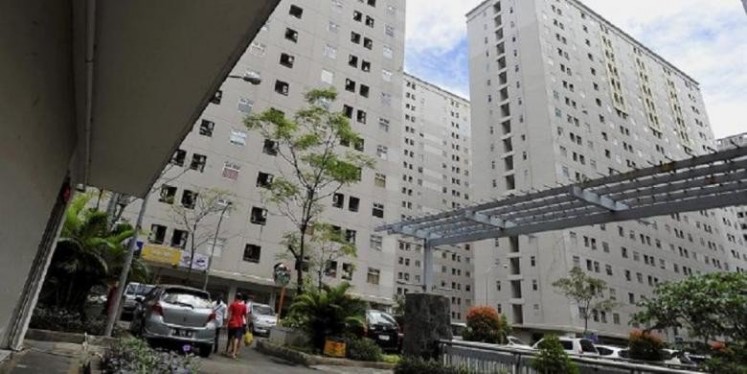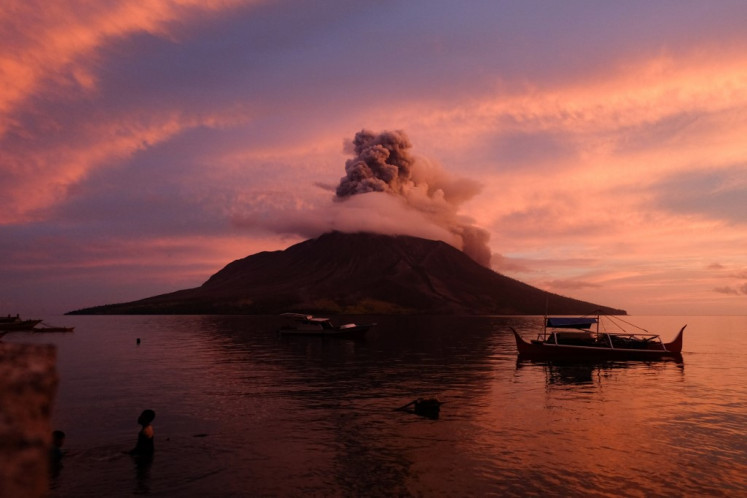Half of fire-prone peatland in concession areas
About 30 percent of wildfires between 2015 and 2020 were found in peatland that overlapped with the concession areas, according to a report from environmental coalition Pantau Gambut.
Change Size

R
oughly half of the country’s peatland is at a high fire risk and located within concession areas, raising concerns about widespread wildfires due to the challenges of fire prevention and mitigation in these privately controlled lands ahead of this year’s dry season.
Environmental coalition Pantau Gambut previously estimated that 3.8 million hectares of peatland across the country were at high risk of wildfire. The estimate was made by analyzing hotspots and burned area data from 2015 to 2019 along with their geographic locations.
From the estimate, the coalition found that about 2.1 million ha of the peatland are located within and around concession areas mostly owned by oil palm and pulpwood plantation companies, Pantau Gambut revealed on Thursday.
Some companies convert the swampy peatland, which contains decomposed vegetation and holds carbon dioxide, into land that is suitable for oil palm and pulpwood, by digging canals to drain it. This practice leaves the peat dry and renders it highly flammable.
Most of the high-risk peatland is found in Central Kalimantan, which has 1.2 million ha of it, nearly 500,000 ha of which are overlapping with concession areas. The province has been in the top five provinces with the worst wildfires every year, especially in 2015 and 2019.
About 30 percent of wildfires between 2015 and 2020 were found in peatland that overlapped with concession areas, said Pantau Gambut campaigner Wahyu Perdana.
“Any peatland with a history of fire and located within a concession area should have their functions restored into a sustainable ecosystem,” Wahyu said in a discussion hosted by Pantau Gambut in Jakarta on Thursday.
The report came when Indonesia is bracing for a hotter dry season this year because of the El Niño weather phenomenon over the Pacific. The climate event is expected to increase the risk of wildfires in forests and peatland.
El Niño was also to blame for the 2019 wildfire that burned at least 1.6 million ha of land across Indonesia, sending transboundary haze into neighboring countries.
But putting out fires on peatland concession areas might not be as easy as it sounds. It is the responsibility of concession owners to put out any wildfire that starts on their land, said Bambang Surya Putra, the National Disaster Mitigation Agency (BNPB) control and operations head.
“We can only help if the fires get too big and need intensive resources to be put out,” Bambang said. “We won’t let forest fires get too big, pollute the air or cross the border.”
Should the companies fail to extinguish the fire and force the government to help, authorities could sue the corporations, he added.
Palm oil companies joining the Roundtable of Sustainable Palm Oil (RSPO) might have a head start on fire prevention and mitigation efforts. The organization alerts corporations when a hotspot is detected in or near their concession area. The company must then respond to the alert by confirming whether the hotspot is indeed a fire.
“We will report each company’s compliance to the certification body, which will verify the hotspot reports during membership audits,” said RSPO assurance director Aryo Gustomo.
He added that the sustainable palm oil organization could also punish its members if RSPO receives any reports through its grievance mechanism on large fires breaking out within the member’s concession area.
Authorities have moved to prevent fires ahead of the peak of the dry season, expected to fall between July and August. The disaster agency has launched cloud seeding to induce rain in four provinces, namely Riau, West Kalimantan, East Nusa Tenggara and West Java, said Bambang of BNPB. “Now is the right time for cloud seeding while we still have clouds to create rain.”









